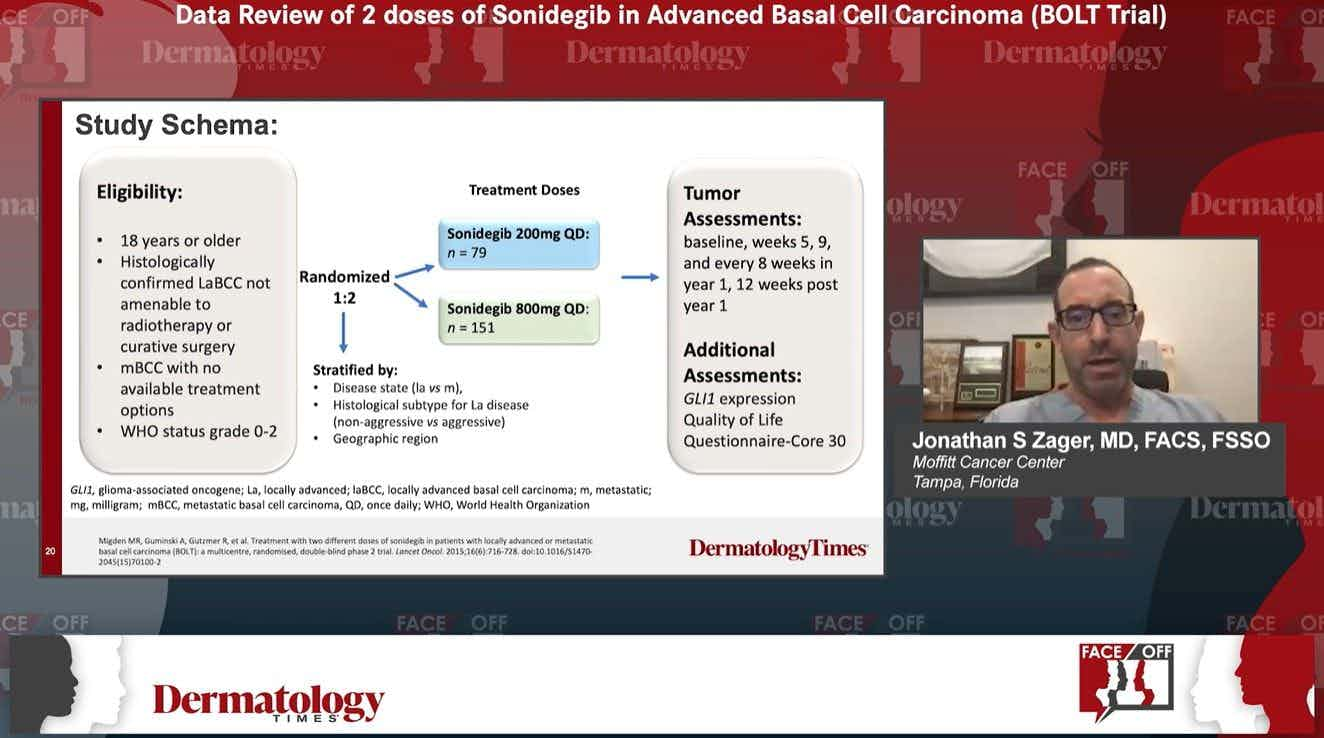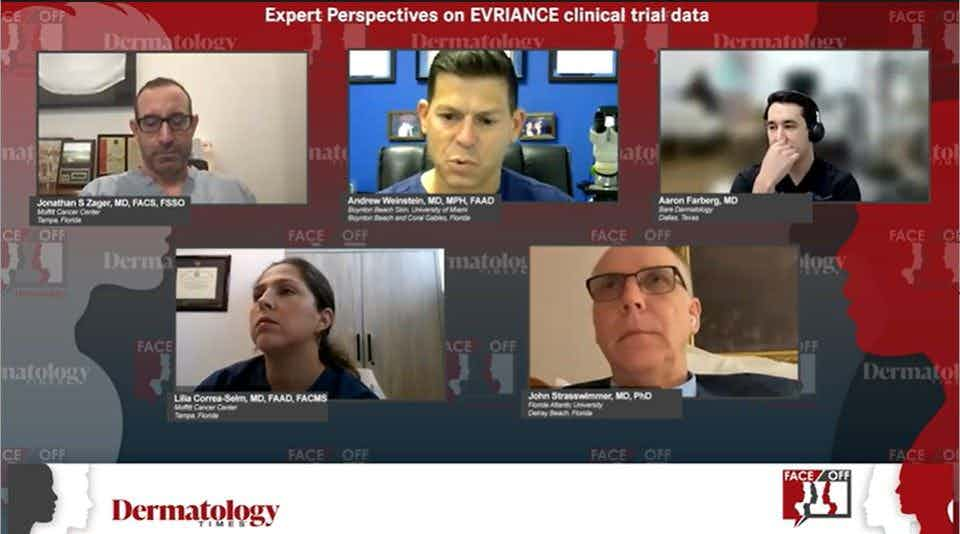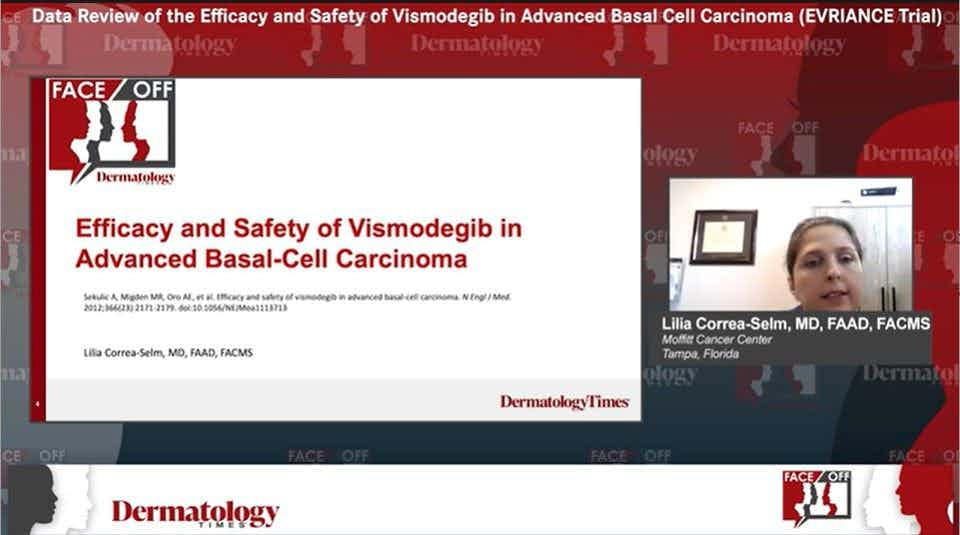- Acne
- Actinic Keratosis
- Aesthetics
- Alopecia
- Atopic Dermatitis
- Buy-and-Bill
- COVID-19
- Case-Based Roundtable
- Chronic Hand Eczema
- Chronic Spontaneous Urticaria
- Drug Watch
- Eczema
- General Dermatology
- Hidradenitis Suppurativa
- Melasma
- NP and PA
- Pediatric Dermatology
- Pigmentary Disorders
- Practice Management
- Precision Medicine and Biologics
- Prurigo Nodularis
- Psoriasis
- Psoriatic Arthritis
- Rare Disease
- Rosacea
- Skin Cancer
- Vitiligo
- Wound Care
Article
SCC and BCC Updates from Maui Derm NP+PA Fall
Author(s):
At Maui Derm NP+PA Fall 2021, George Martin, MD, discussed his opinion on best treatment options for SCC in situ and cutaneous SCC at high risk for metastasis along with BCC that require special considerations.
Best treatment approaches for squamous cell carcinoma (SCC) and basal cell carcinoma (BCC) were discussed at the Maui Derm NP+PA Fall 2021 conference, which is being held live Asheville, North Carolina, and virtually this week.1
George Martin, MD, dermatologist and founder of Maui Derm, Maui, Hawaii, who prepared his slides in collaboration with Ted Rosen, MD, professor of dermatology at Baylor College of Medicine in Houston, Texas, discussed SCC in situ (SCCis or Bowen’s Disease), a condition which he said has been adequately addressed in American Academy of Dermatology guidelines for treating SCC.2
He noted that 5-aminolevulinic acid (ALA) photodynamic therapy (PDT) is an off-label treatment, and has a lack of protocols which can lead to variations in use.
Martin reviewed a single-center, retrospective study of medical records that included 58 patients with 68 primary SCCis treated with ALA-PDT with blue light. There was a completed response to therapy determined at a 3-month exam with a mean follow-up time of about 1 year.3
Of the SCCis, 55.9% were located on the face and 44.1% were in other areas, but a majority of the percentage was on the scalp. For the face SCCis, 86.8% of them were cleared compared to 66.7% of the SCCis in other locations. The researchers on that study suggested that the longer the incubation time was, the greater the skin clearance with 53.3% cleared after 2 to 2.99 hours and 84.9% cleared with 4 or more hours of incubation. The range of depth of the SCCis was 0.3-7 cm and 75% had residual tumor, but 25% had no visible tumor after biopsy.
The potential reasons why SCCis resists ALA-PDT, according to Martin, is the more aggressive biology, non-uniform photosensitizer/light across the lesion, failure to detect deeper SCC, and deep follicular invasion. Recurrence was noted in 13.2% of patients after about a year, but prior study findings found 50% of delayed recurrences happen after 1 year of follow up.4
Martin explained that SCCis on the face responds better to ALA-PDT, and longer incubation of greater than or equal to 3 hours leads to a higher clearance rate. He added that lesions smaller than 2 cm respond better to treatment.
Also, Martin discussed SCCis treatment with respect to imiquimod 5%.According to Martin, it is effective and has good cosmetic outcomes but requires between 6-12 weeks of 5 times weekly therapy.
He also talked about retinoids as a preventive treatment for SCC and how they can be a good treatment for patients who are immunosuppressed. Retinoids can prevent morbidity from multiple primary tumors and reduce the risk of death from high-risk tumors.
Martin uses retinoids in his practice when there is an increasing amount of SCC or BCC tumors, a high-risk SCC tumor (defined as a metastatic risk of greater than or equal to 20%), patients who have surgical fatigue, and in patients who are deescalating immunosuppressive drugs.He starts with 10 mg per day for 1-2 months and then and gradually increases to 25 mg per day if tolerated. Adverse effects of treatment include mucocutaneous cheilitis, skin peeling, alopecia, hyperostosis, hyperlipidemia, and an increased risk of skin cancer with treatment is ceased.
Special consideration patients were also discussed, with Martin explaining that significant medical comorbidities may justify a treatment option that may have a longer long-term cure rate but is appropriate for quality of life. In some cases, like one Martin mentioned in the presentation, he may avoid surgery for more appropriate treatments like radiation therapy based on patients' situations.
Martin then discussed BCC that require special considerations, including superficial BCC in sensitive areas such as the face where scarring/hypopigmentation is an issue. These tumors respond to ALA PDT using protocols similar to the SCCis protocol mentioned above and leave little to no scarring. Large/numerous superficial BCC on trunk or extremities can be effectively treated with imiquimod for 6-12 weeks. Finally, cemiplimab, a PD-1 inhibitor, has been recently approved for the treatment of locally advanced and metastatic BCC that have failed hedgehog therapy.
Disclosures:
George Martin is on the scientific advisory board for Bristol Meyers Squibb, DUSA/SUN, AbbVie, Ortho/Bausch Health Galderma, Pfizer, Leo Pharma, Celgene, Janssen, Horizon, and UCB. He is a consultant for DUSA/SUN, Bristol Meyers Squibb, Ortho/Bausch, Pfizer, Almirall, Celgene, Lilly, Athenex, Biofrontera, UCB, and Leo Pharma.
Reference:
1. Martin G. Cutaneous Oncology. Session presented at: Maui Derm NP+PA Fall 2021 conference Program; September 30, 2021; Accessed September 30, 202. Asheville, North Carolina
2. Alam M, Armstrong A, Baum C, et al. Guidelines of care for the management of cutaneous squamous cell carcinoma. J Am Acad Dermatol. 2018;78(3):560-578. doi:10.1016/j.jaad.2017.10.007
3. Kibbi N, Zhang Y, Leffell DJ, Christensen SR. Photodynamic therapy for cutaneous squamous cell carcinoma in situ: Impact of anatomic location, tumor diameter, and incubation time on effectiveness. J Am Acad Dermatol. 2020;82(5):1124-1130. doi:10.1016/j.jaad.2019.10.079
4. Cabete J, Rafael M, Cravo, et al. Long-term recurrence of nonmelanoma skin cancer after topical methylaminolevulinate photodynamic therapy in a dermato-oncology department. An Bras Dermatol. 2015;90(6): 846-850. doi: 10.1590/abd1806-4841.20154080
Newsletter
Like what you’re reading? Subscribe to Dermatology Times for weekly updates on therapies, innovations, and real-world practice tips.













